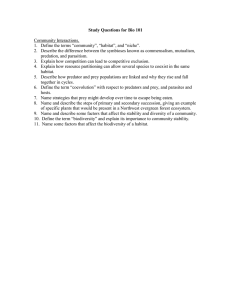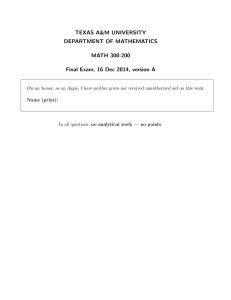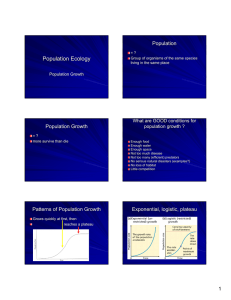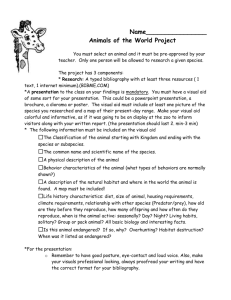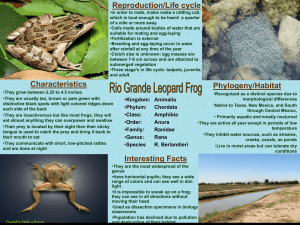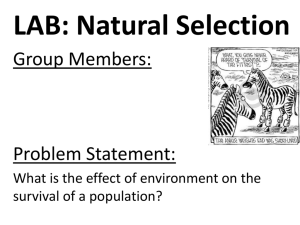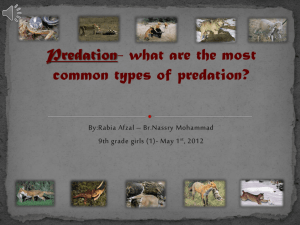Interactions between habitat complexity and temporal variability in
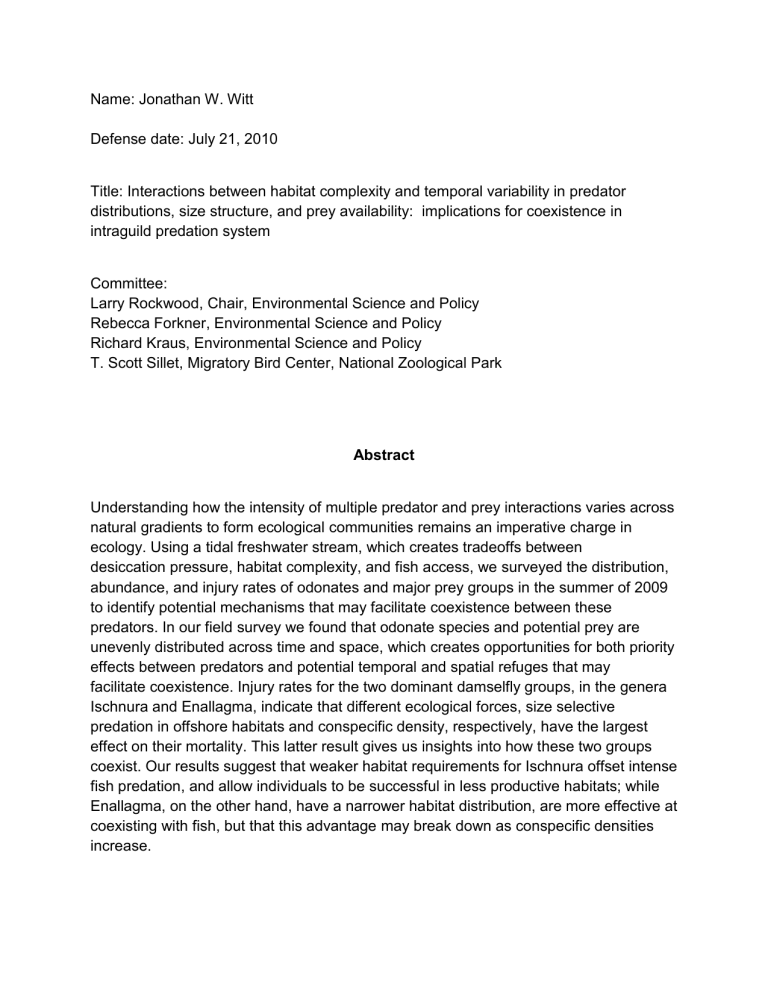
Name: Jonathan W. Witt
Defense date: July 21, 2010
Title: Interactions between habitat complexity and temporal variability in predator distributions, size structure, and prey availability: implications for coexistence in intraguild predation system
Committee:
Larry Rockwood, Chair, Environmental Science and Policy
Rebecca Forkner, Environmental Science and Policy
Richard Kraus, Environmental Science and Policy
T. Scott Sillet, Migratory Bird Center, National Zoological Park
Abstract
Understanding how the intensity of multiple predator and prey interactions varies across natural gradients to form ecological communities remains an imperative charge in ecology. Using a tidal freshwater stream, which creates tradeoffs between desiccation pressure, habitat complexity, and fish access, we surveyed the distribution, abundance, and injury rates of odonates and major prey groups in the summer of 2009 to identify potential mechanisms that may facilitate coexistence between these predators. In our field survey we found that odonate species and potential prey are unevenly distributed across time and space, which creates opportunities for both priority effects between predators and potential temporal and spatial refuges that may facilitate coexistence. Injury rates for the two dominant damselfly groups, in the genera
Ischnura and Enallagma, indicate that different ecological forces, size selective predation in offshore habitats and conspecific density, respectively, have the largest effect on their mortality. This latter result gives us insights into how these two groups coexist. Our results suggest that weaker habitat requirements for Ischnura offset intense fish predation, and allow individuals to be successful in less productive habitats; while
Enallagma, on the other hand, have a narrower habitat distribution, are more effective at coexisting with fish, but that this advantage may break down as conspecific densities increase.

